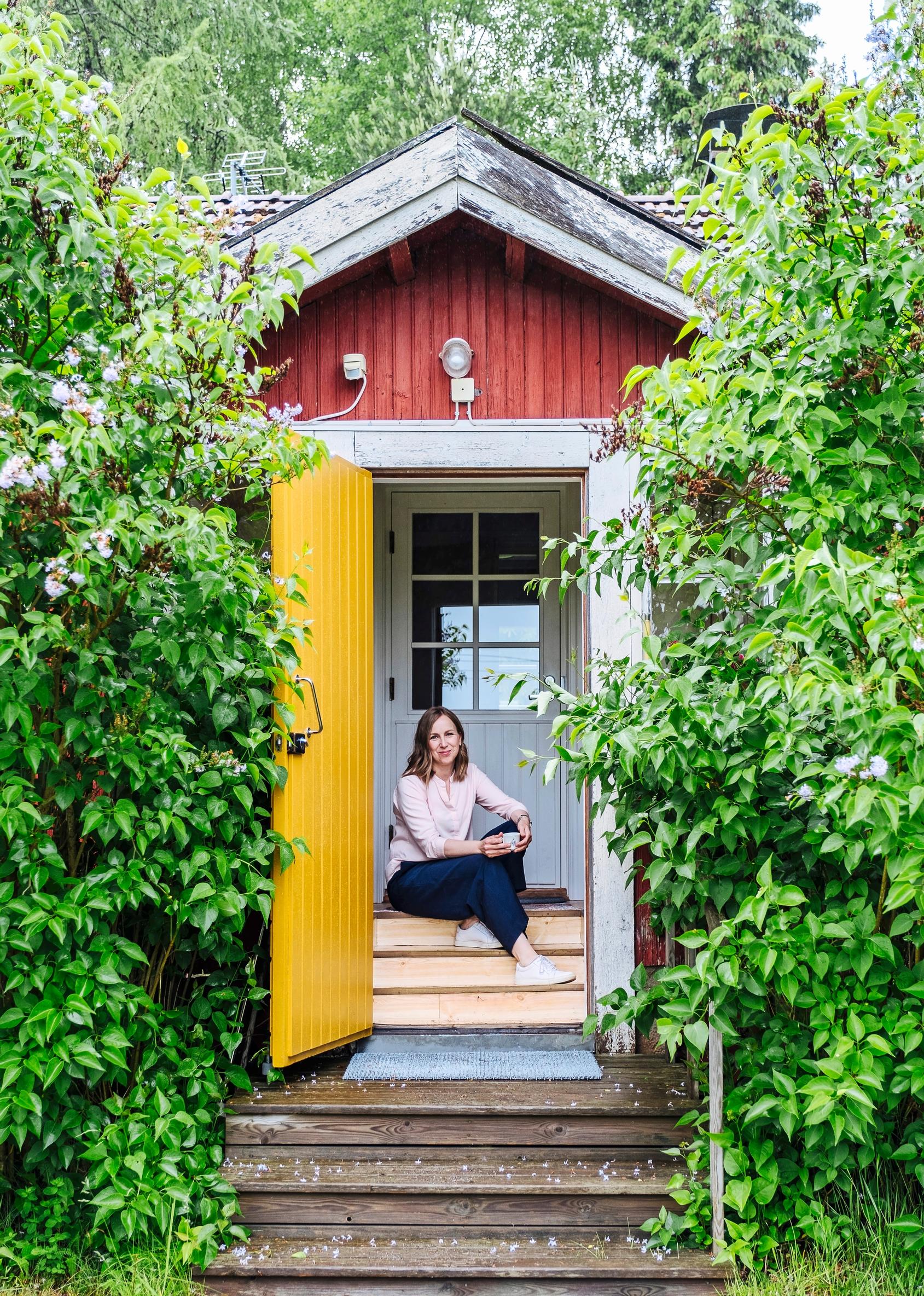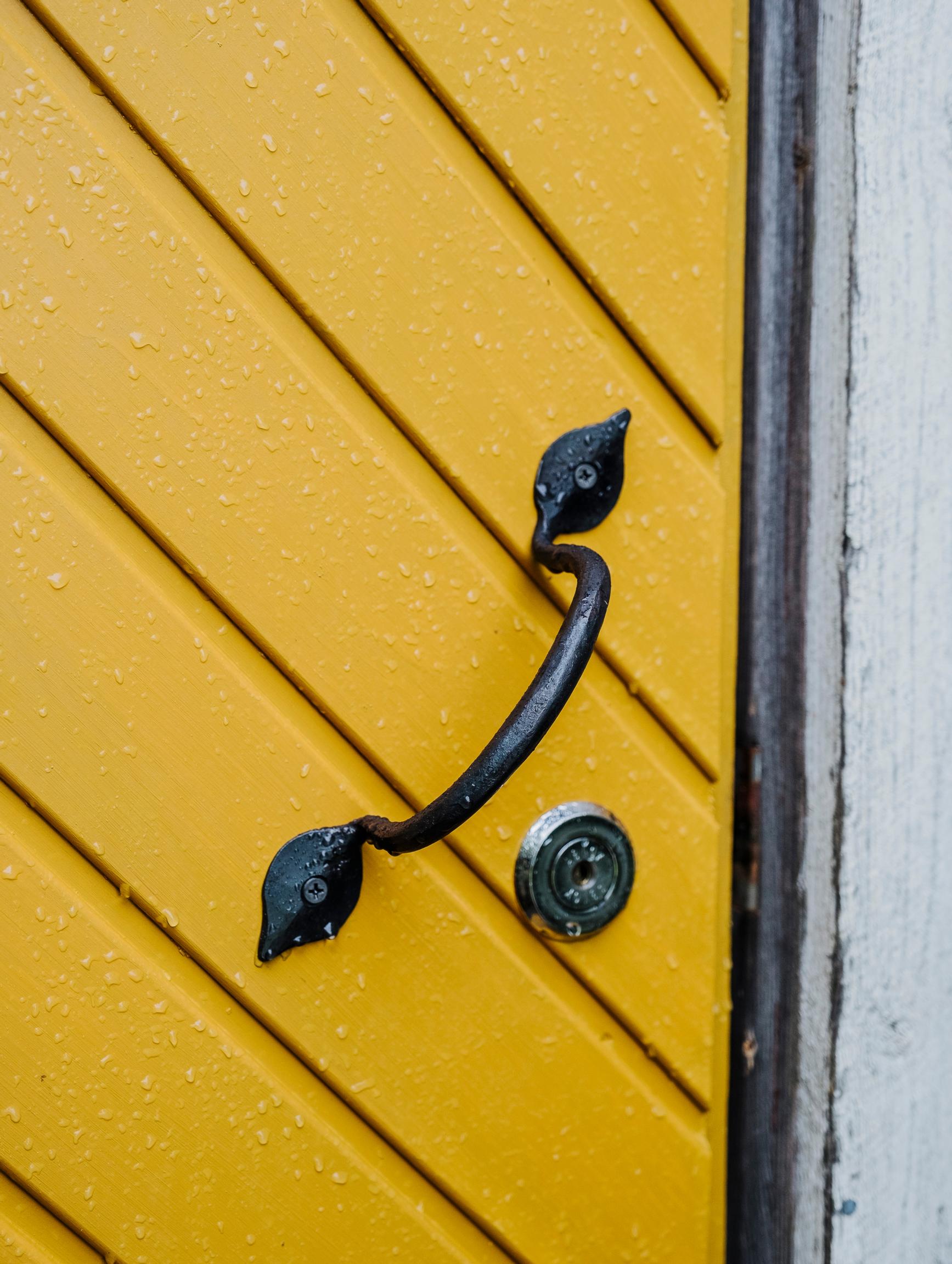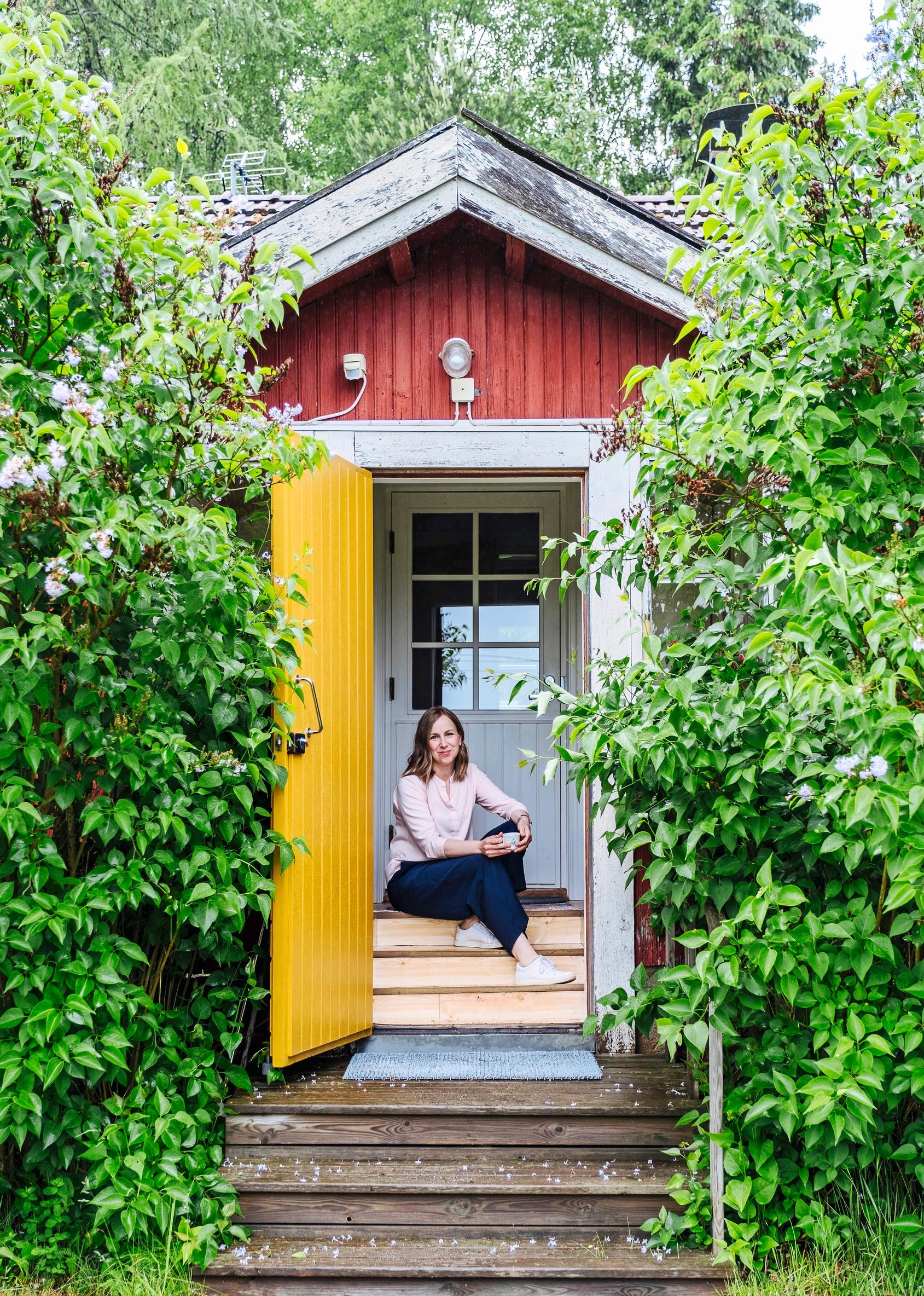
Grandma and grandpa’s memory lives on in Sanna’s summer home: “All we bought new were mattresses and a fridge”
Something good came out of the Covid pandemic: the furlough gave Sanna, who works as a pilot for Finnair, time to help turn her father’s childhood home into a cozy summer place for future generations.
When the coronavirus hit, the world nearly came to a standstill. Finnair pilot Sanna Kari was furloughed. Sanna’s work was suspended for months, and by the end of 2020, she was waiting to find out when it would restart.
Winter came, and in Sanna’s household, they were already thinking about the next summer. How would they celebrate Midsummer? Sanna wondered if she should book a rental cottage.
“We do have a cottage where we can at least go grill in the yard,” her partner Janne Heikkonen commented.
And so they did: Sanna’s grandparents’ old house in Raseborg, southern Finland. Sanna’s faffa—her grandfather—had lived there on his own after fammu—her grandmother—passed away. When Sanna’s grandfather also died in 2009, the house was left empty. Sanna and her father Erkki Kari bought the property from the estate.
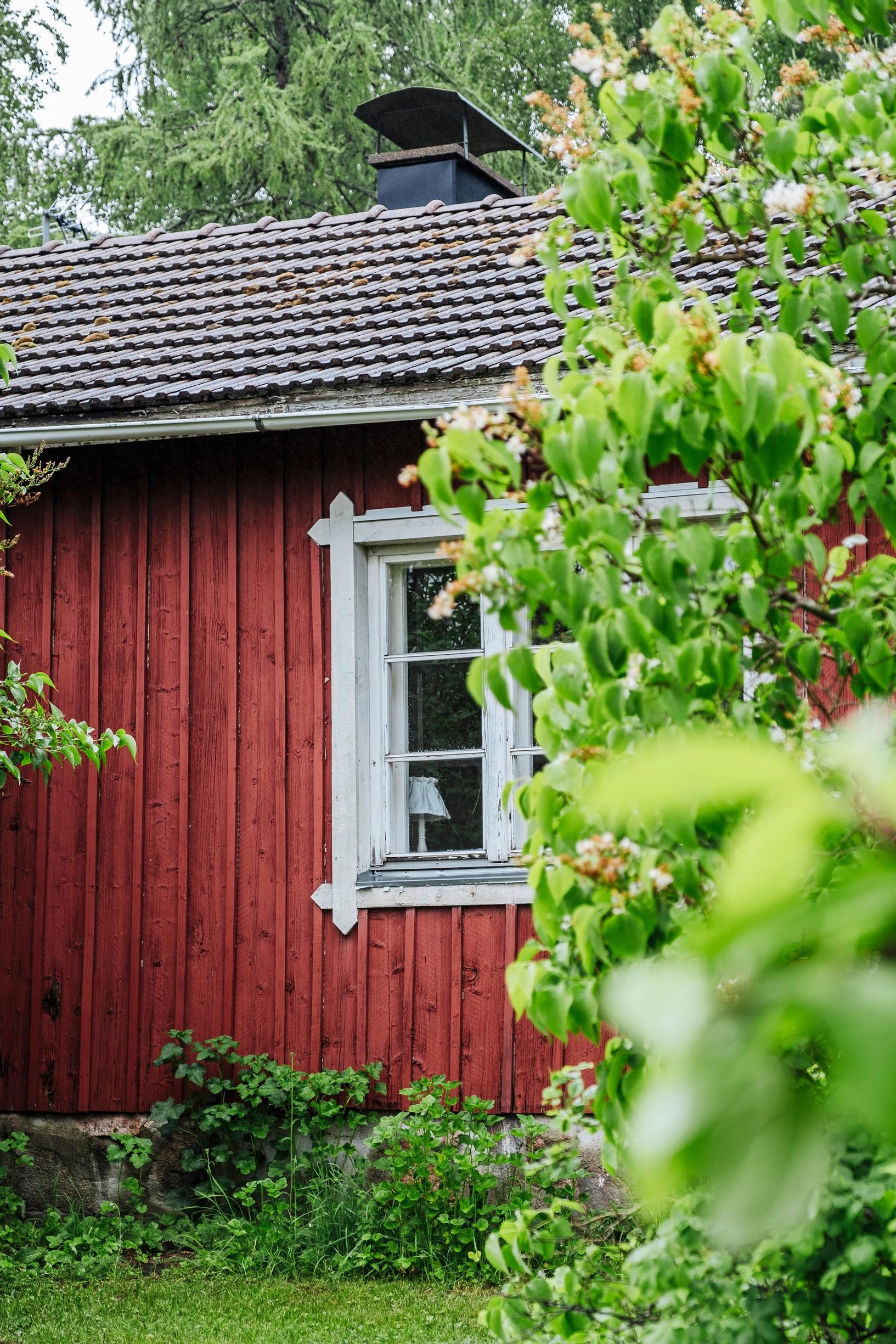
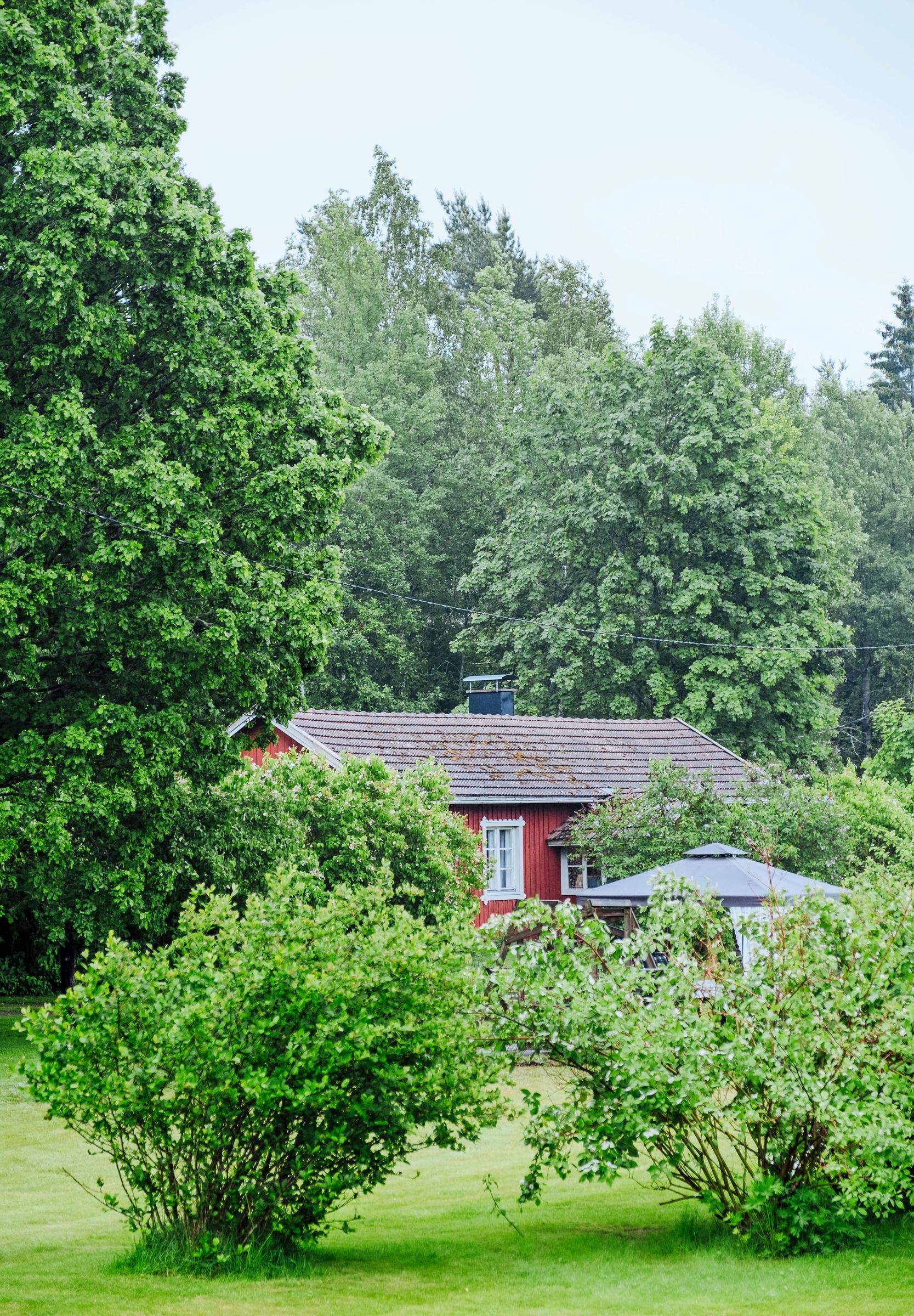
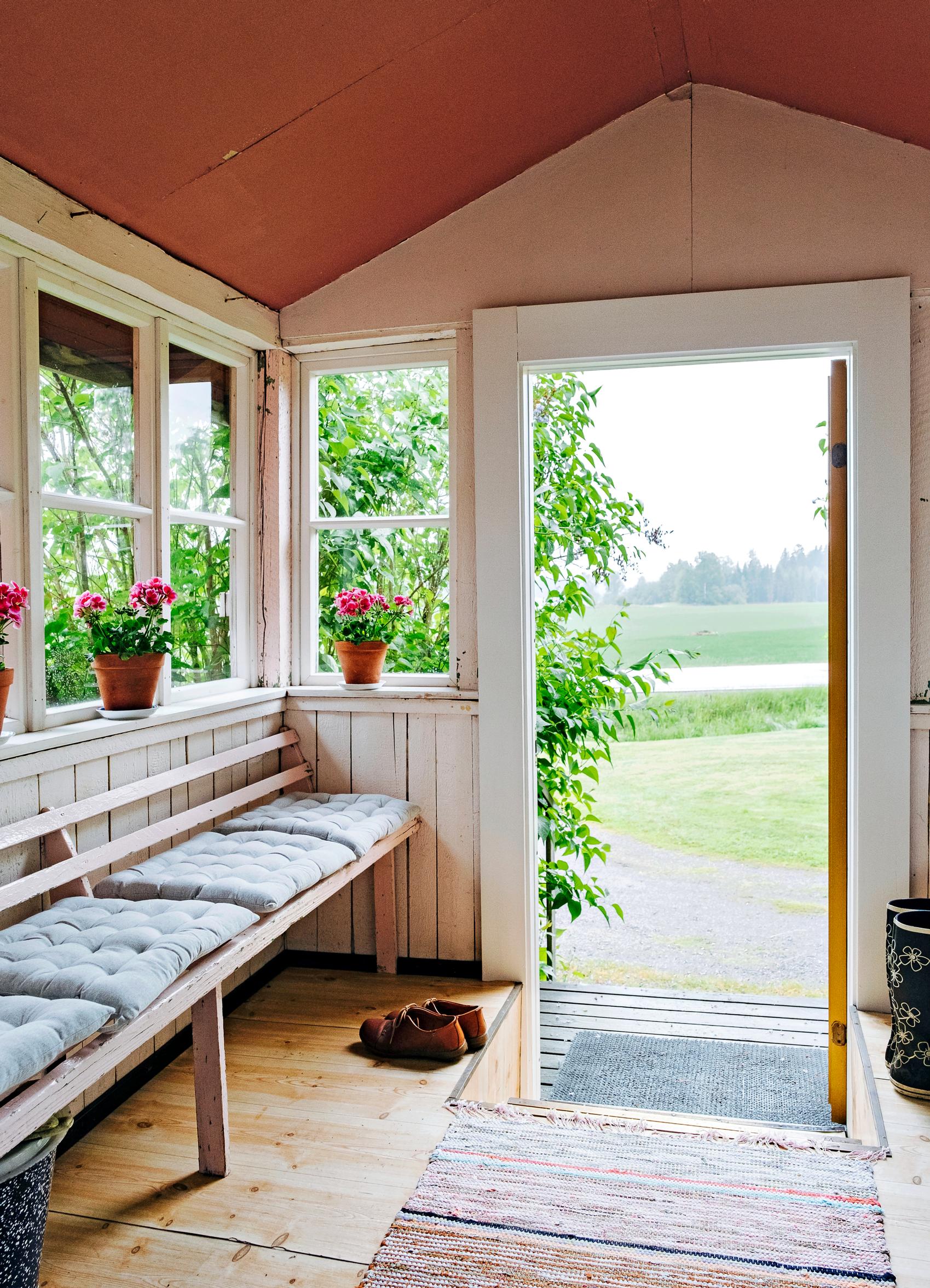
The log house in Raseborg
Who: Pilot Sanna Kari, 47, elementary school teacher Janne Heikkonen, 52, and their two school-aged children.
What: A 70-square-meter (750-square-foot) log house built in the 18th–19th century, plus a garage and a wooden sauna outbuilding.
Where: In Raseborg, southern Finland.
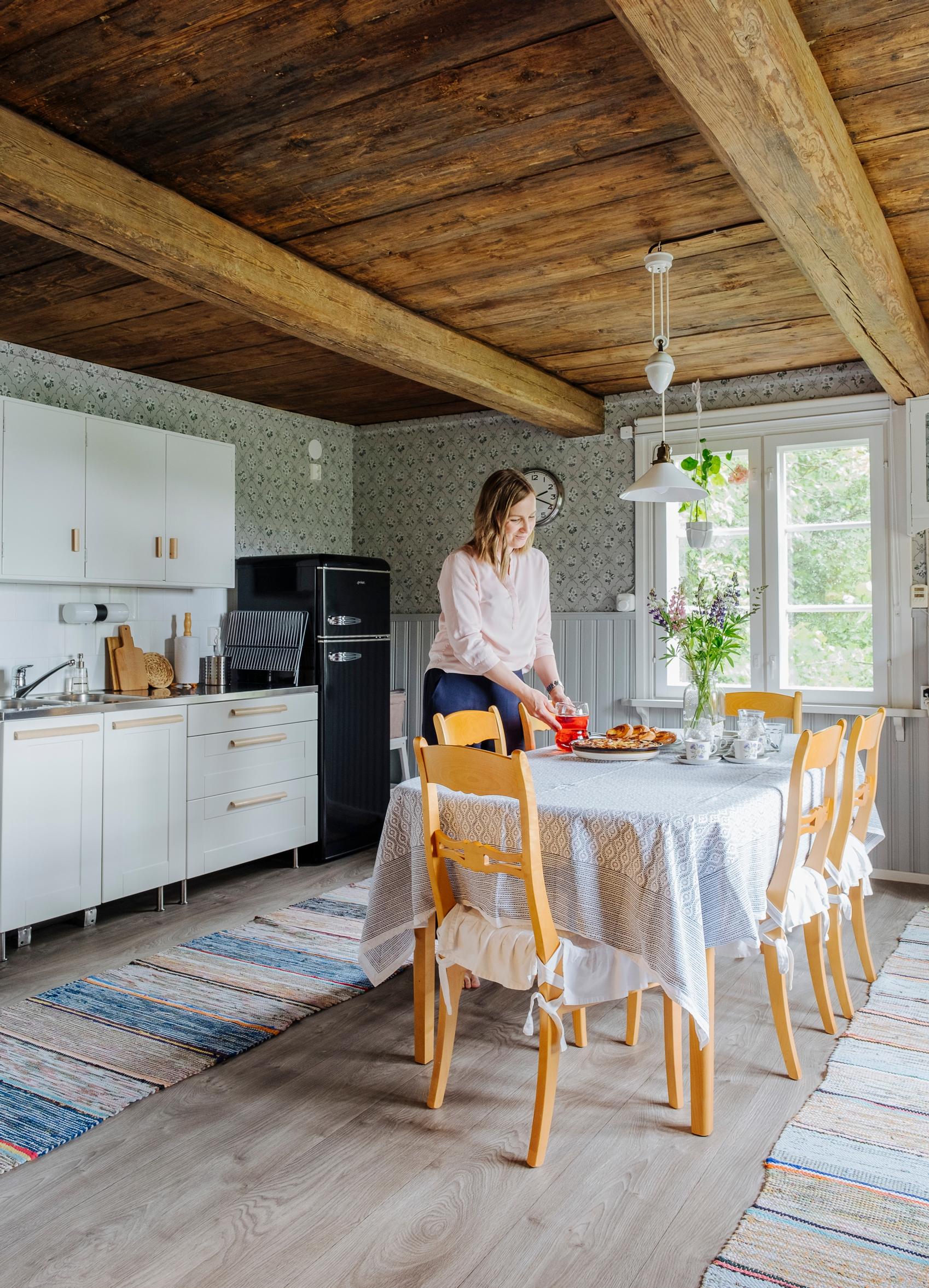
Renovation work began right away on the building. The old house is a symmetrical two-room structure, where the living area side dates back to the 18th century and other side with the the large bedroom to the 19th century. The living area’s ceiling was stripped of the hardboard and plastic added in the 1960s, revealing sturdy logs and boards beneath. They had been coated with a lime-based paint mixture and needed washing.
Next, they wallpapered the large bedroom and painted the window frames. After that, it was possible to spend the night there. They also removed the old wardrobes from the large room and tore out the outdated kitchen.
The cottage became Sanna’s father’s storage and hobby spot: he mowed the lawn and kept the place in order.
However, the renovation came to a stop because a bigger building project began in Hämeenlinna: Sanna and Janne were building a Ostrobothnian-style single-family house for themselves. Around the same time, their first daughter was born.
That put an end to the cottage repairs. The cottage became Sanna’s father’s storage and hobby spot: he mowed the lawn and kept the place in order. There’s an old Fordson Major in the backyard, nicknamed his “therapy tractor,” which he repairs and uses for yard and snow work. He still dries his firewood at the cottage, and there’s always some project on the go in the garage.
A few years later, Sanna and Janne’s second daughter was born. Although the cottage was occasionally mentioned, the renovation didn’t progress while the children were small.
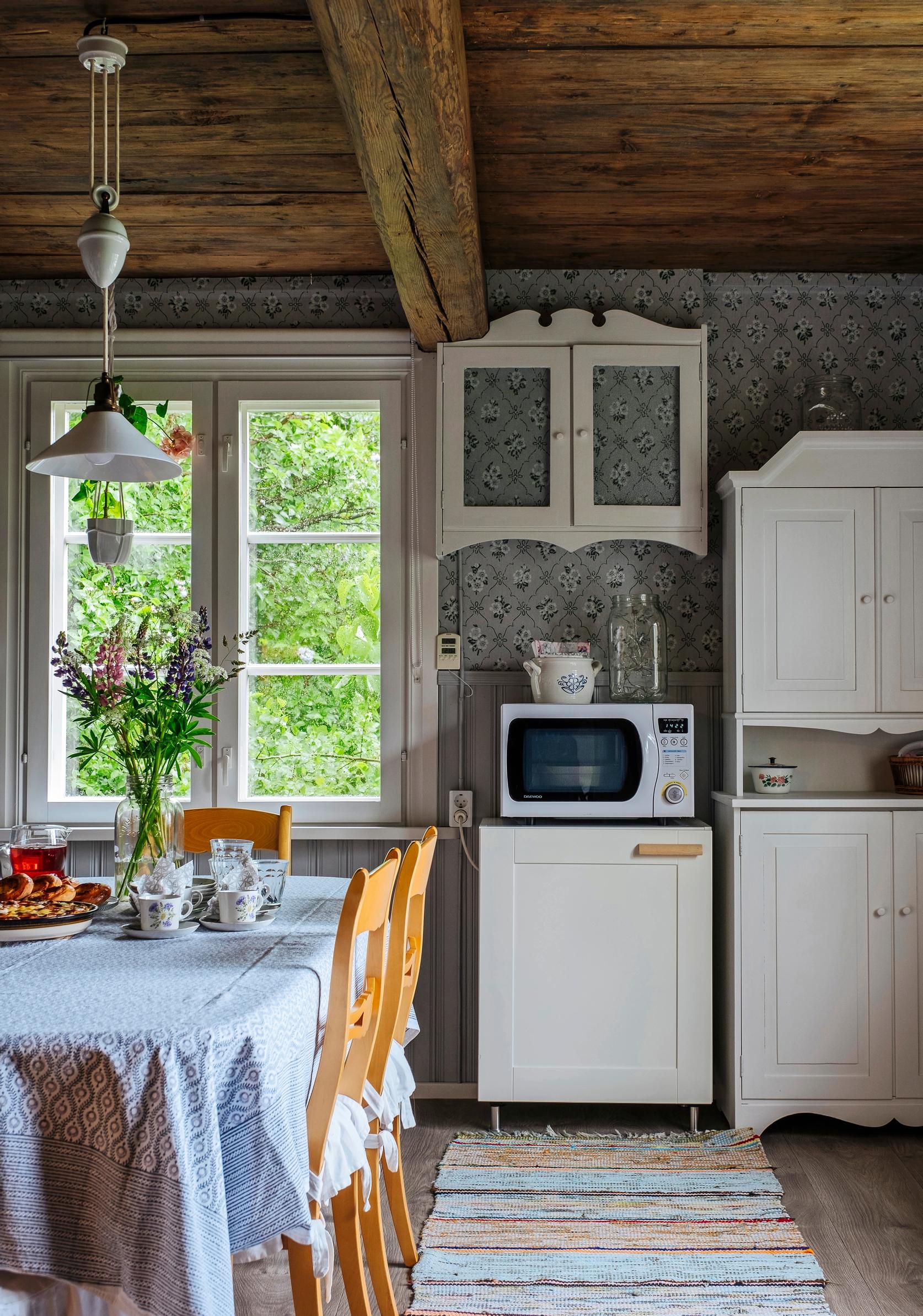
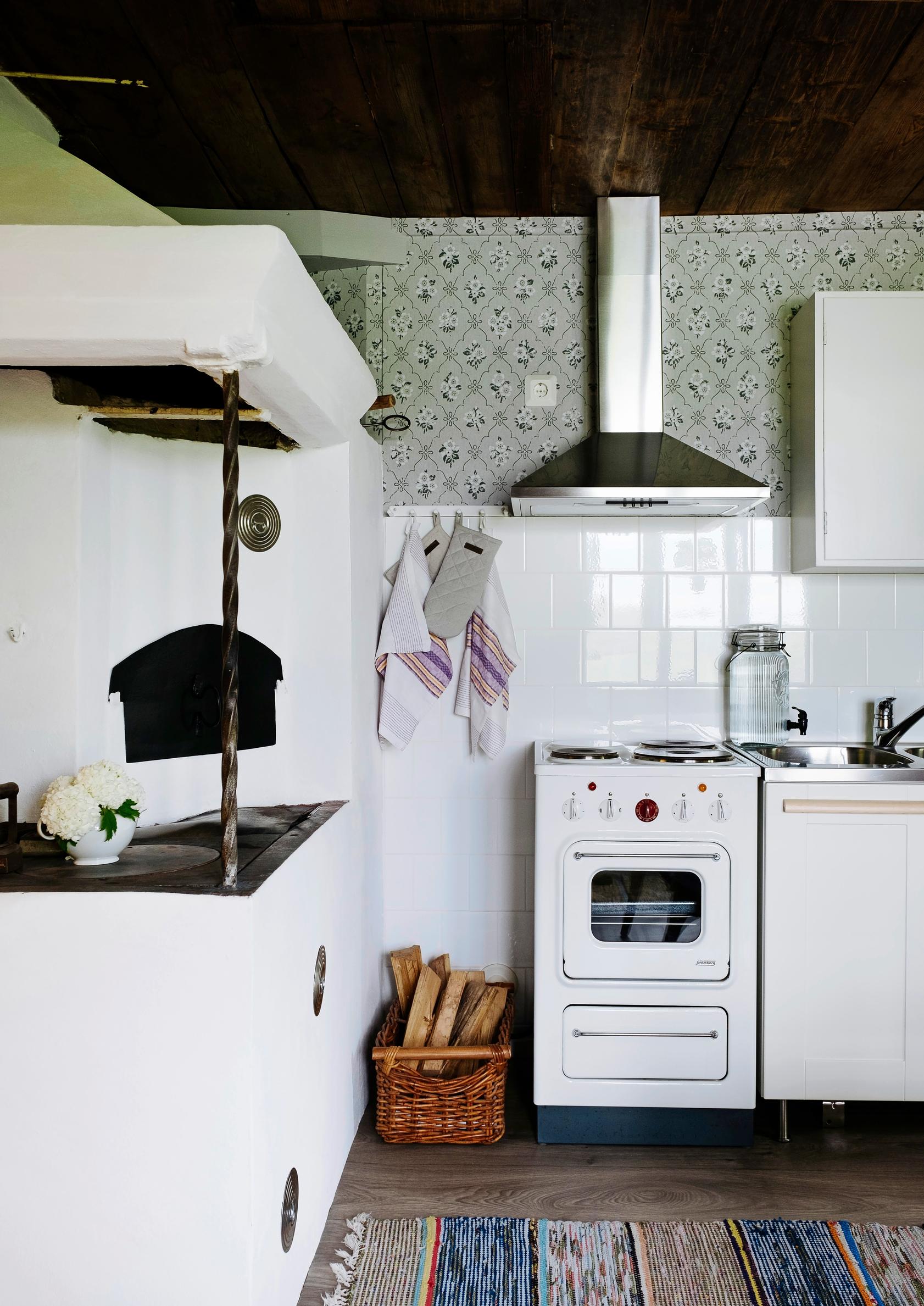
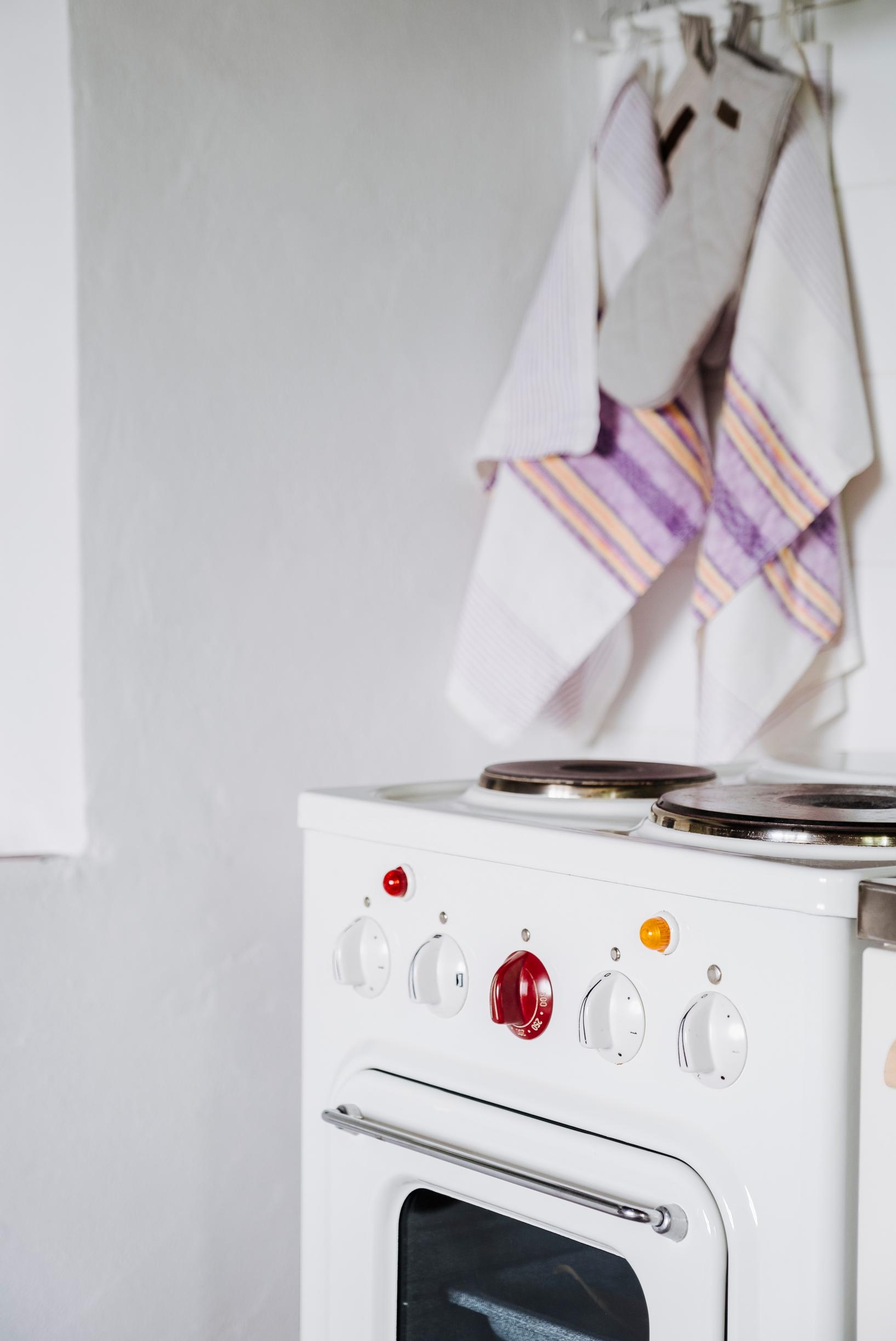
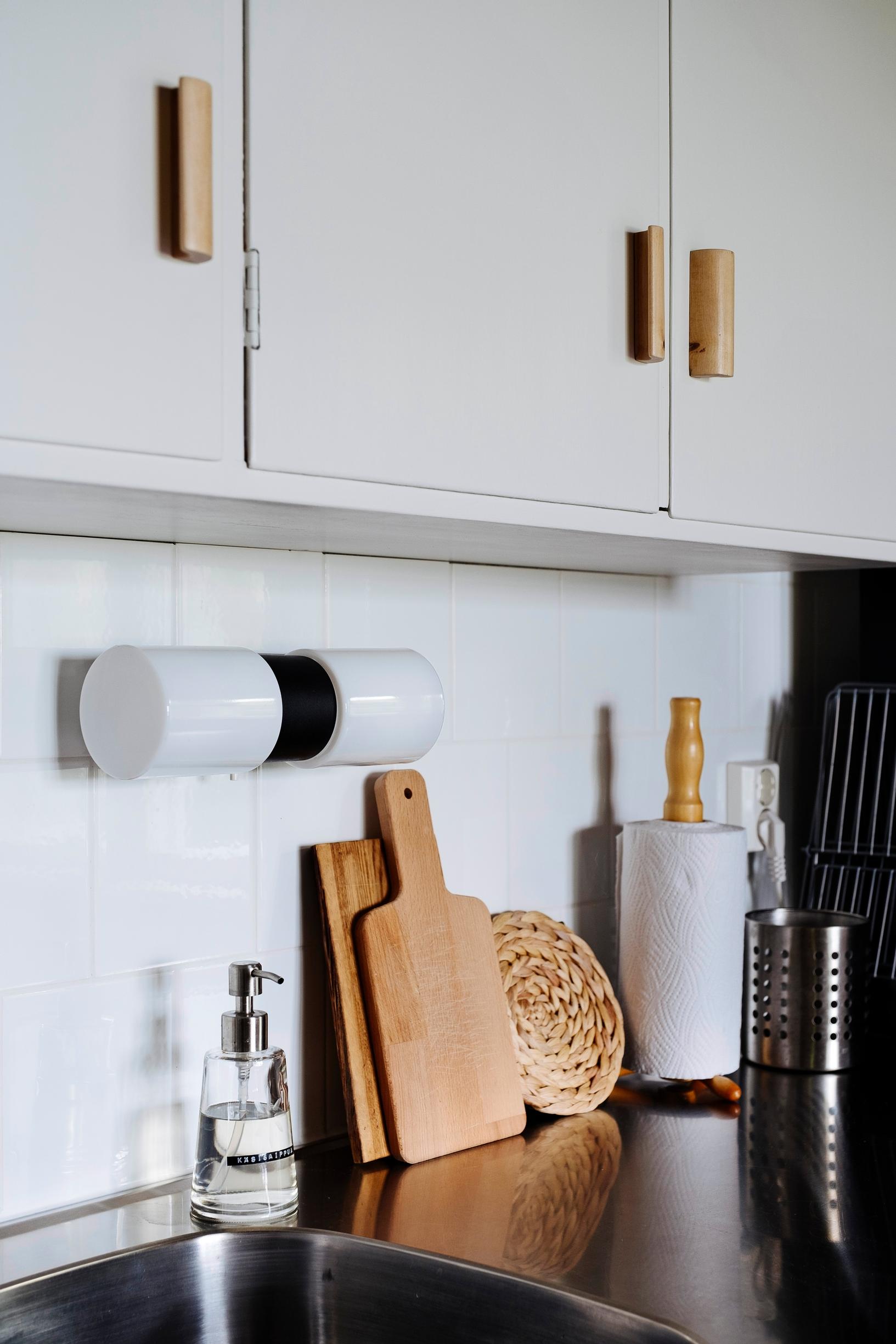
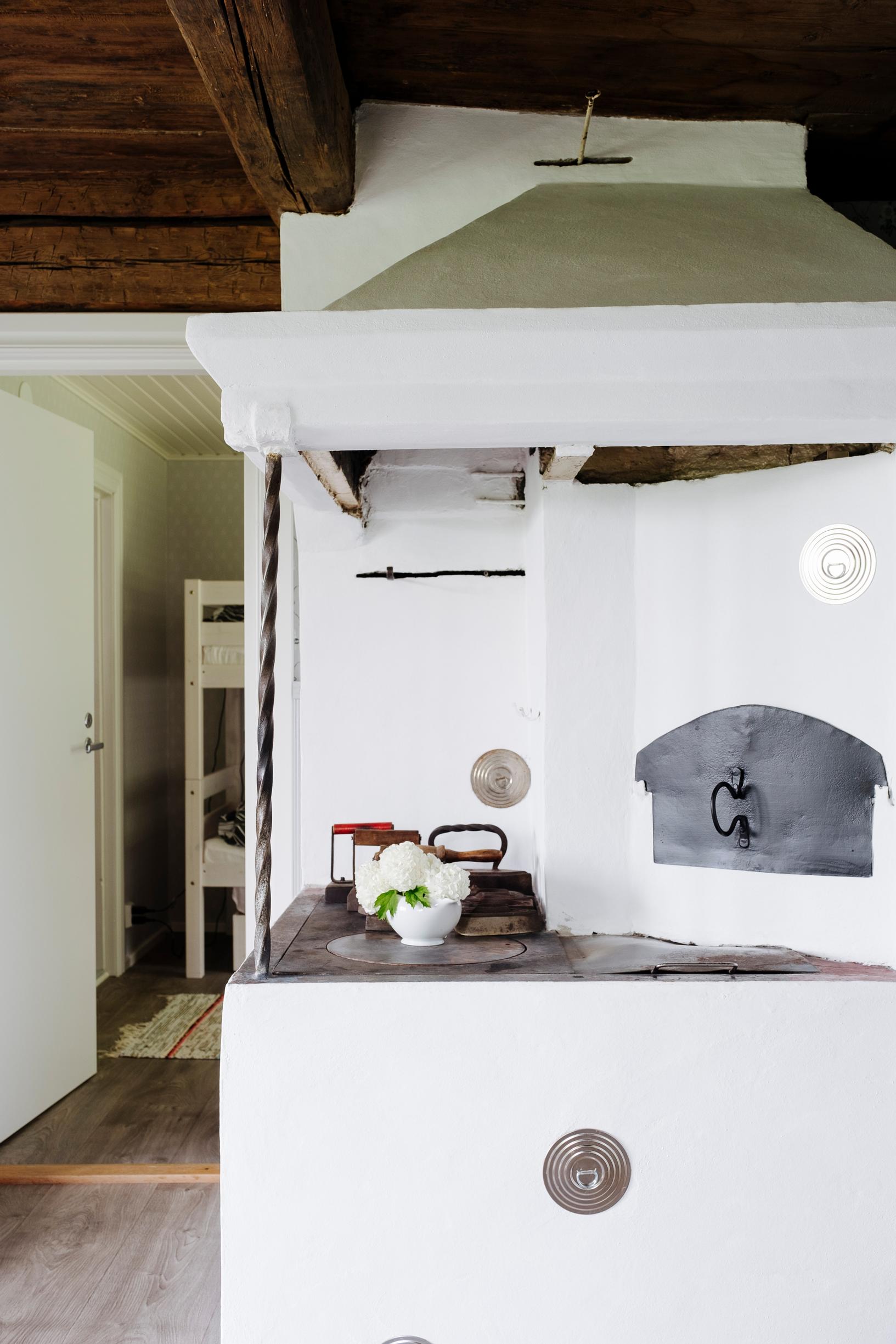
The Covid pandemic changed Sanna’s daily life, and in spring 2021 she had an idea.
“What would you think if I went and fixed up the cottage?” she asked.
The positive response renewed Sanna’s enthusiasm for the renovation, and her father joined in. With time off work, Sanna spent a few days each week at the cottage.
“We worked with the goal of making the interior livable. We weren’t in a hurry with the exterior,” Sanna says.
They had an ambitious timeline: the cottage needed to be ready for Midsummer. Sanna began by washing the kitchen ceiling free of lime paint with water, a dish brush, and rags. The finished ceiling is now a gorgeous, dark focal point.
They also transformed the living area’s walls, which had ten or so layers of old wallpaper over the logs. Removing wallpaper from the partition walls revealed coarse logs underneath, which had been rough-hewn to help the clay-straw plaster stick. Sanna left part of the newly uncovered logwork visible and covered the rest with wood fiberboard and new green-patterned wallpaper.
“All we bought new were mattresses and a fridge; everything else is secondhand.”
There was also plenty to do in grandpa and grandma’s dark bedroom. They stripped away the 1960s hardboard ceiling. The boards uncovered were left as they were but paneled over. The window frames were stained yellow from tobacco smoke, so they were primed and then painted white. The plaster wall was cleaned and wallpapered. Some of the plaster had to be removed, revealing a section of brickwork that was left exposed.
That room became the girls’ room, with two doors. One was discovered when they opened up a partition wall.
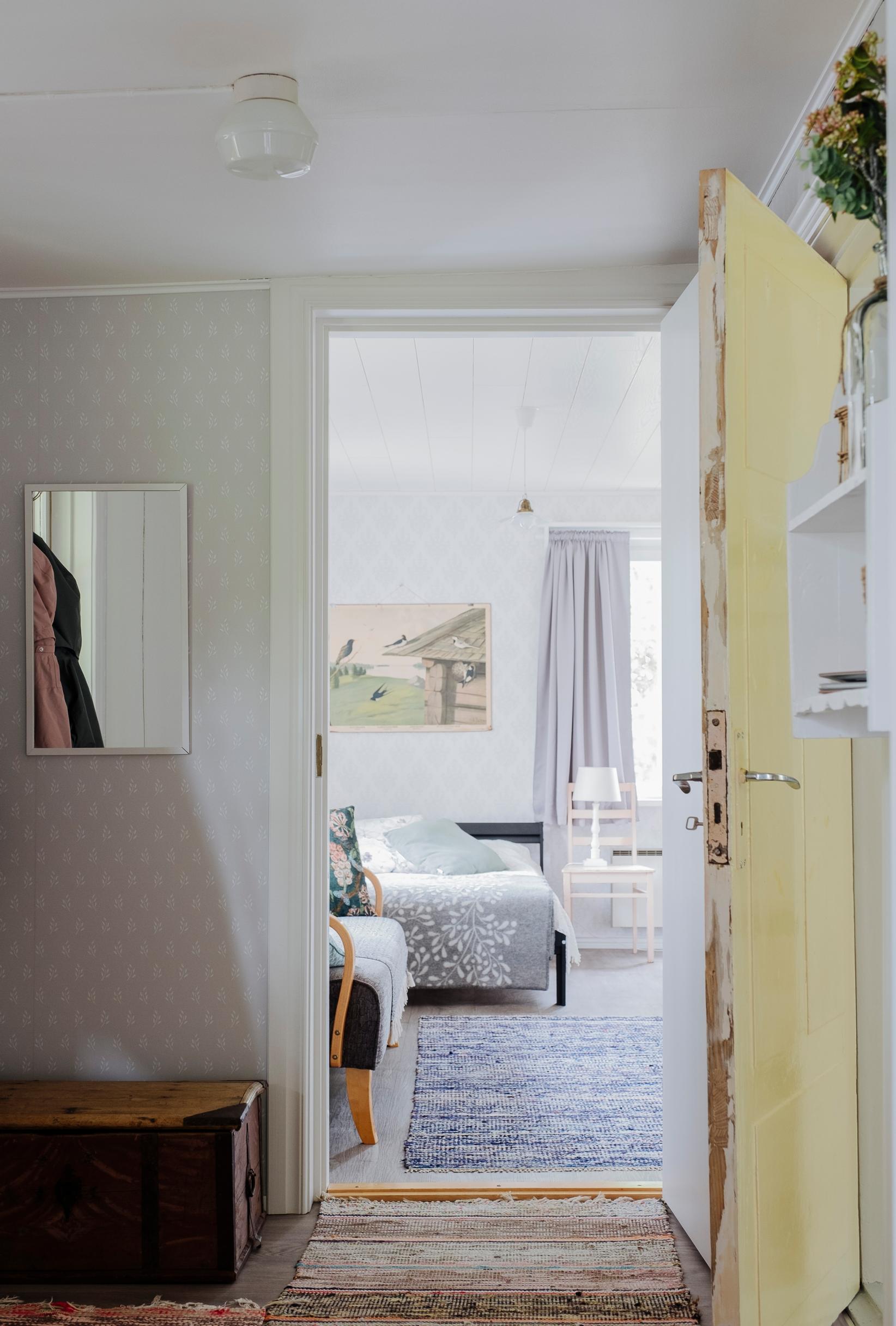
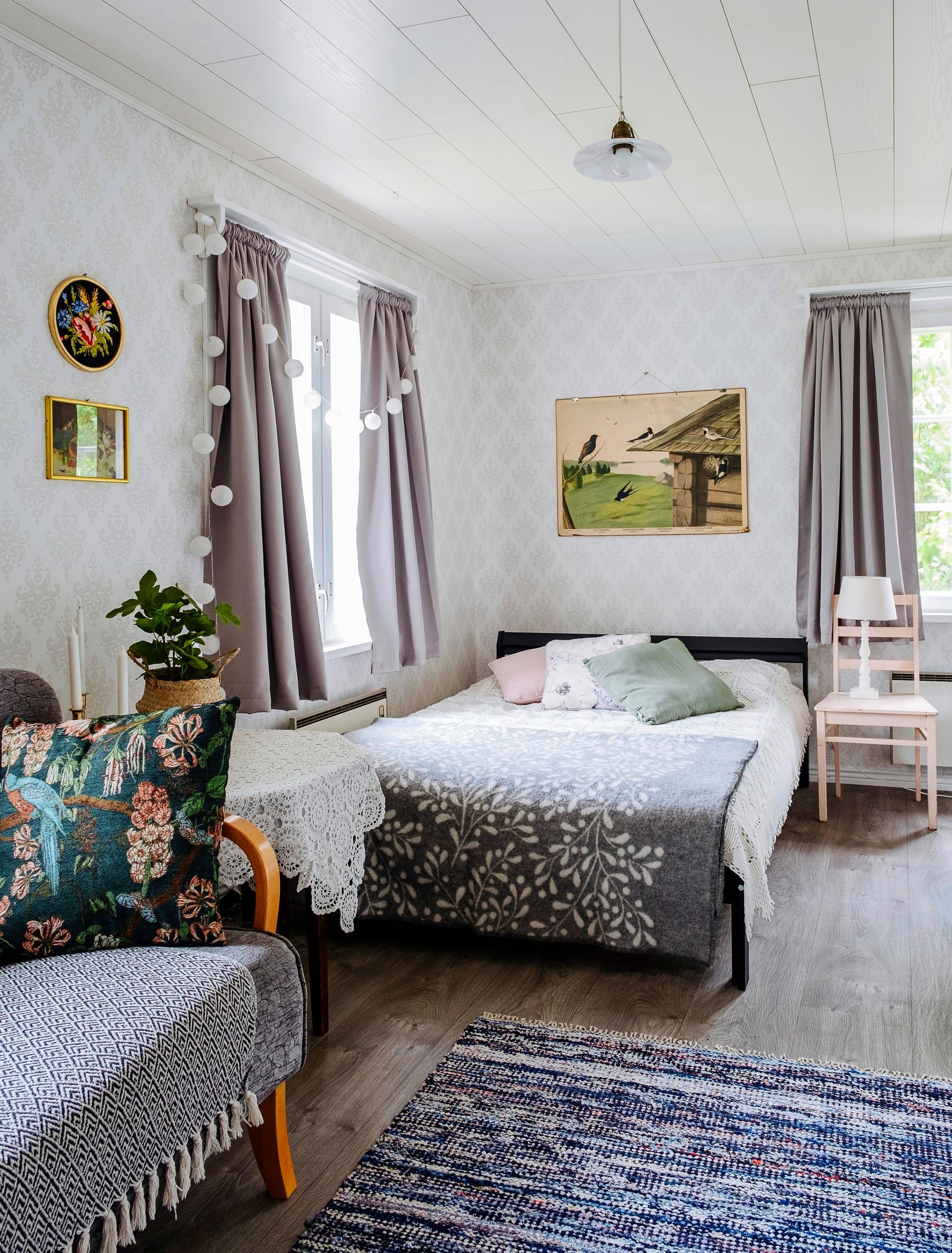
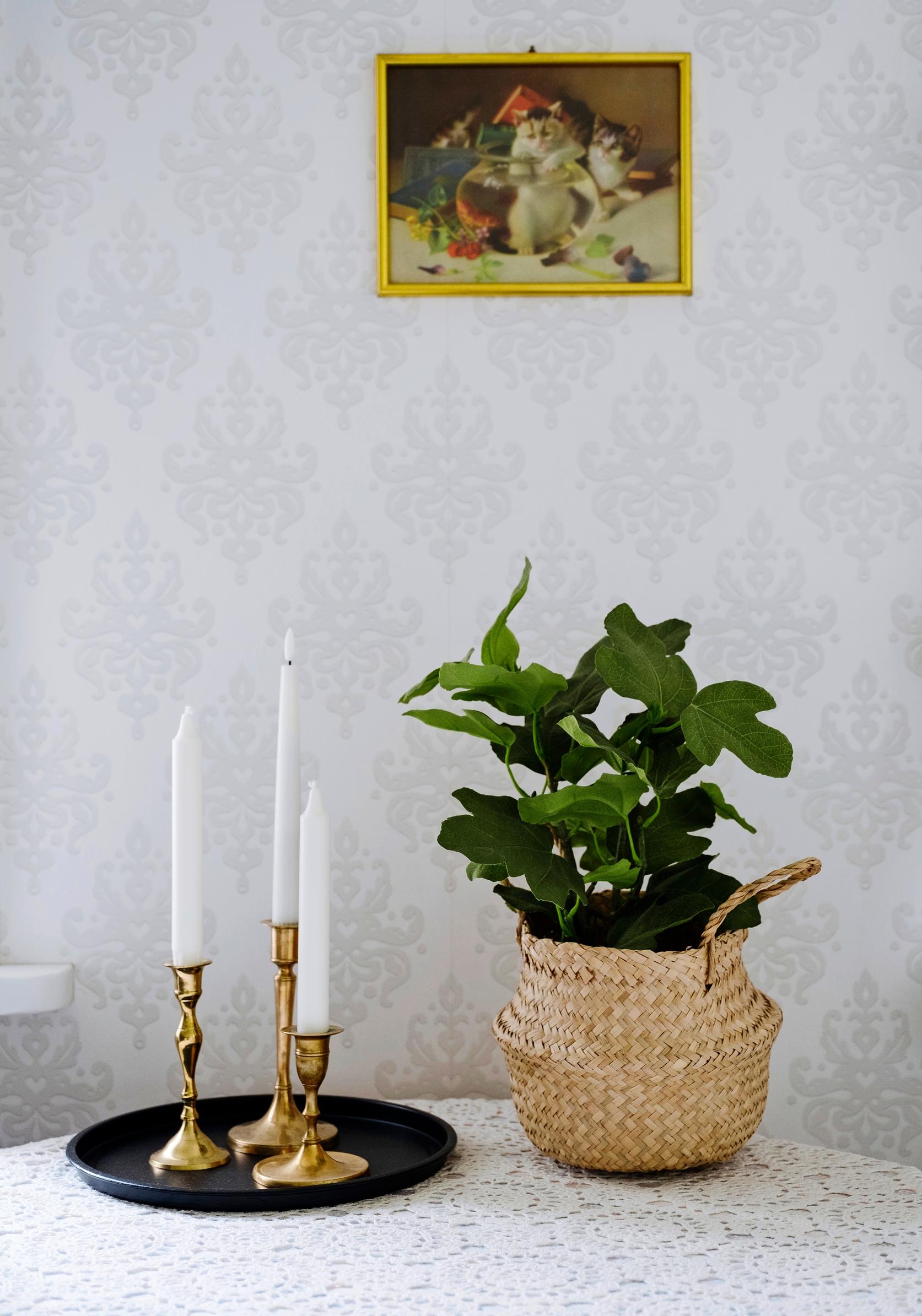
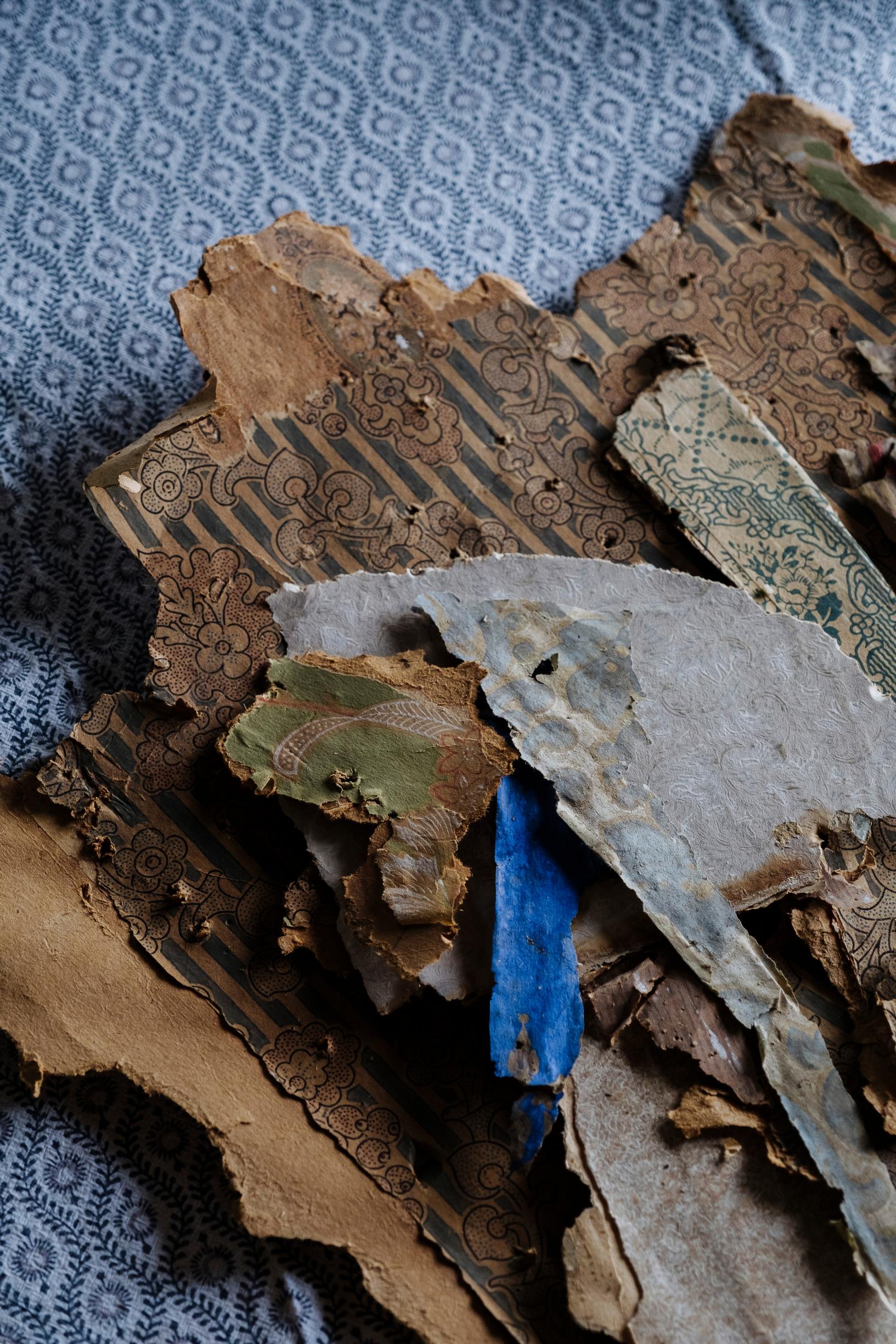
Nearly everything in the house is recycled. The upper kitchen cabinets were leftovers from Sanna’s brother’s project, and the lower cabinets were found on the Tori online marketplace. Sanna unified the look by using extra handles from her brother, which she sanded and varnished. The result is reminiscent of a 1950s kitchen.
The cottage’s furniture is also secondhand, sourced from various places. The couch in the living area has been here for decades, and even before that, there was another couch in the same spot where children slept.
“All we bought new were mattresses and a fridge; everything else is secondhand. The world is pretty complete already as you can find everything used,” Sanna says.
The light fixtures also carry memories. In the living area, there’s a charming balance scale lamp made from old parts. The lamp above the sink is from Sanna’s parents’ 1980s house; its yellowed center was spray-painted black, making it match the black fridge in the kitchen.
Why did Sanna and Erkki want to keep the place in the family? Although the house hasn’t belonged to the family for very long, it’s also Erkki’s childhood home.
“In 1960, my dad’s family bought the house. He was 11 years old at the time,” Sanna explains.
The house once operated as an inn, complete with a liquor license—a logical spot since it’s right on the historically significant King’s Road, a former mail and trade route. According to family lore, court sessions were held there as well.
There were around ten layers of old wallpaper on the living area’s log walls.
In the 1990s, the house was renovated to make life easier for Sanna's grandparents. That’s when the indoor bathroom and toilet were added, and they are still in use. More work was done then, too: the kitchen was updated, the house was repainted outside, and the roof rafters were replaced. Floors and the living area’s ceiling beams were covered in plastic, and the large bedroom walls were given drywall.
Some of these changes have now been undone, and the tobacco-stained wallpaper has been torn away.
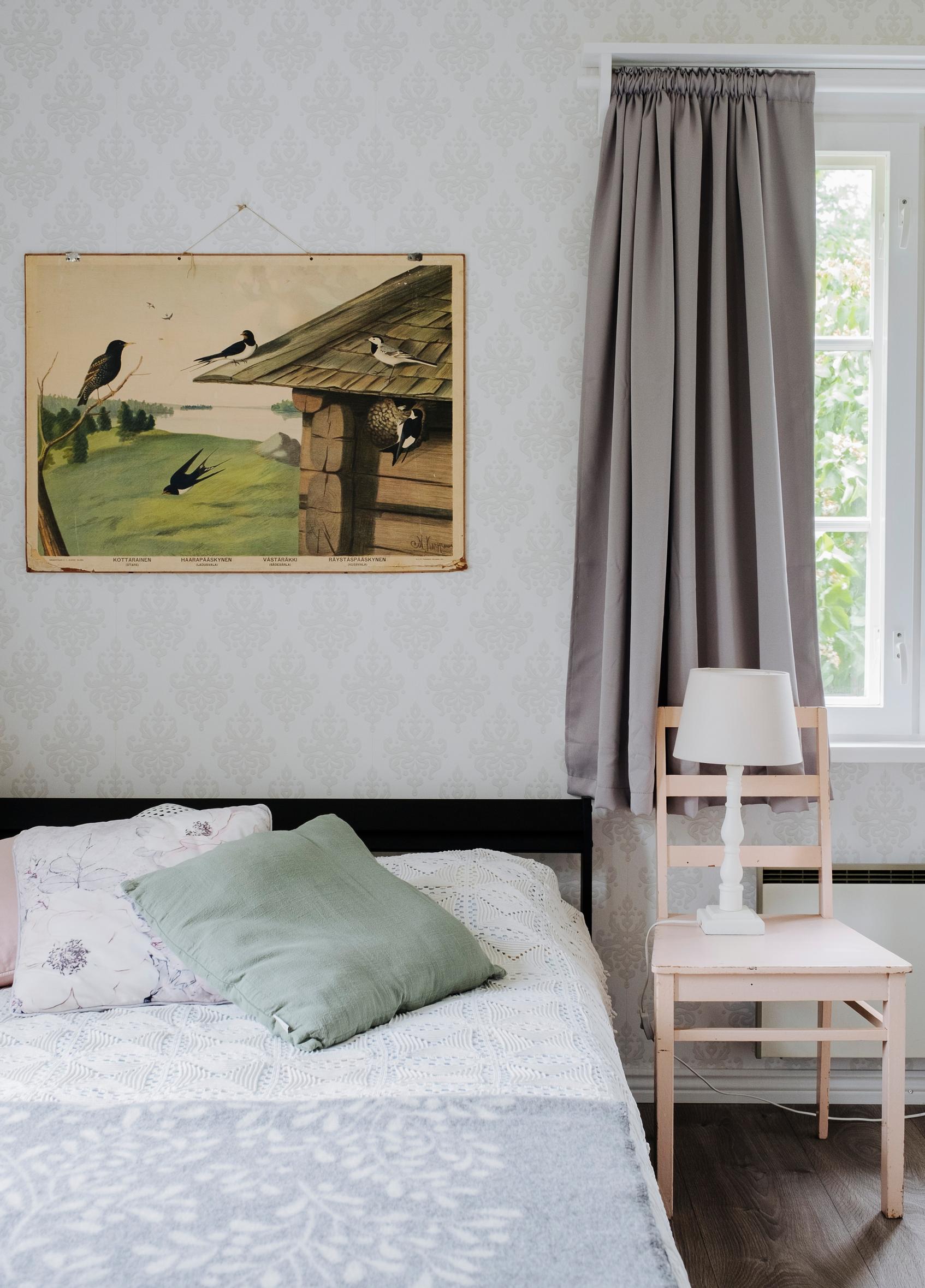
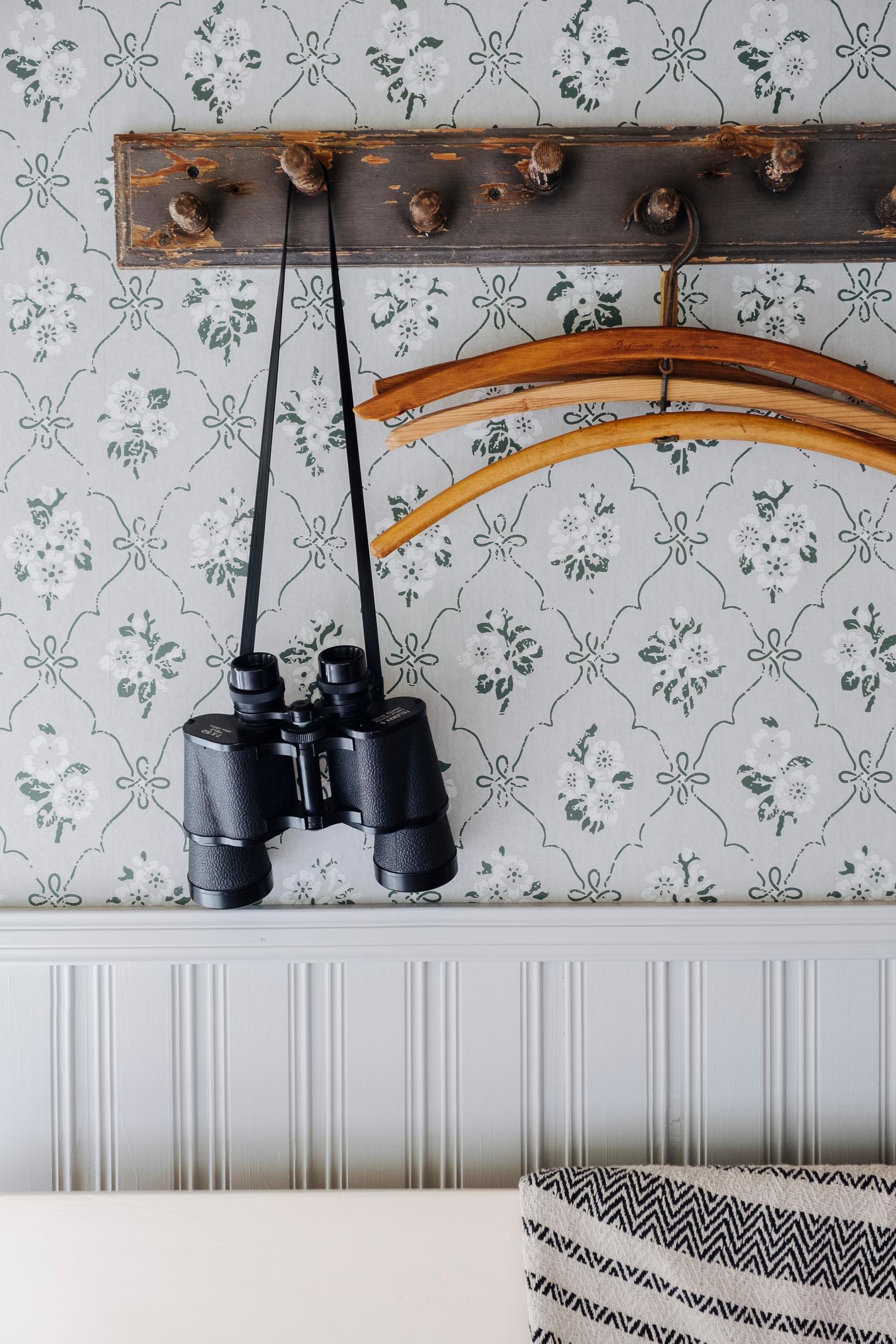
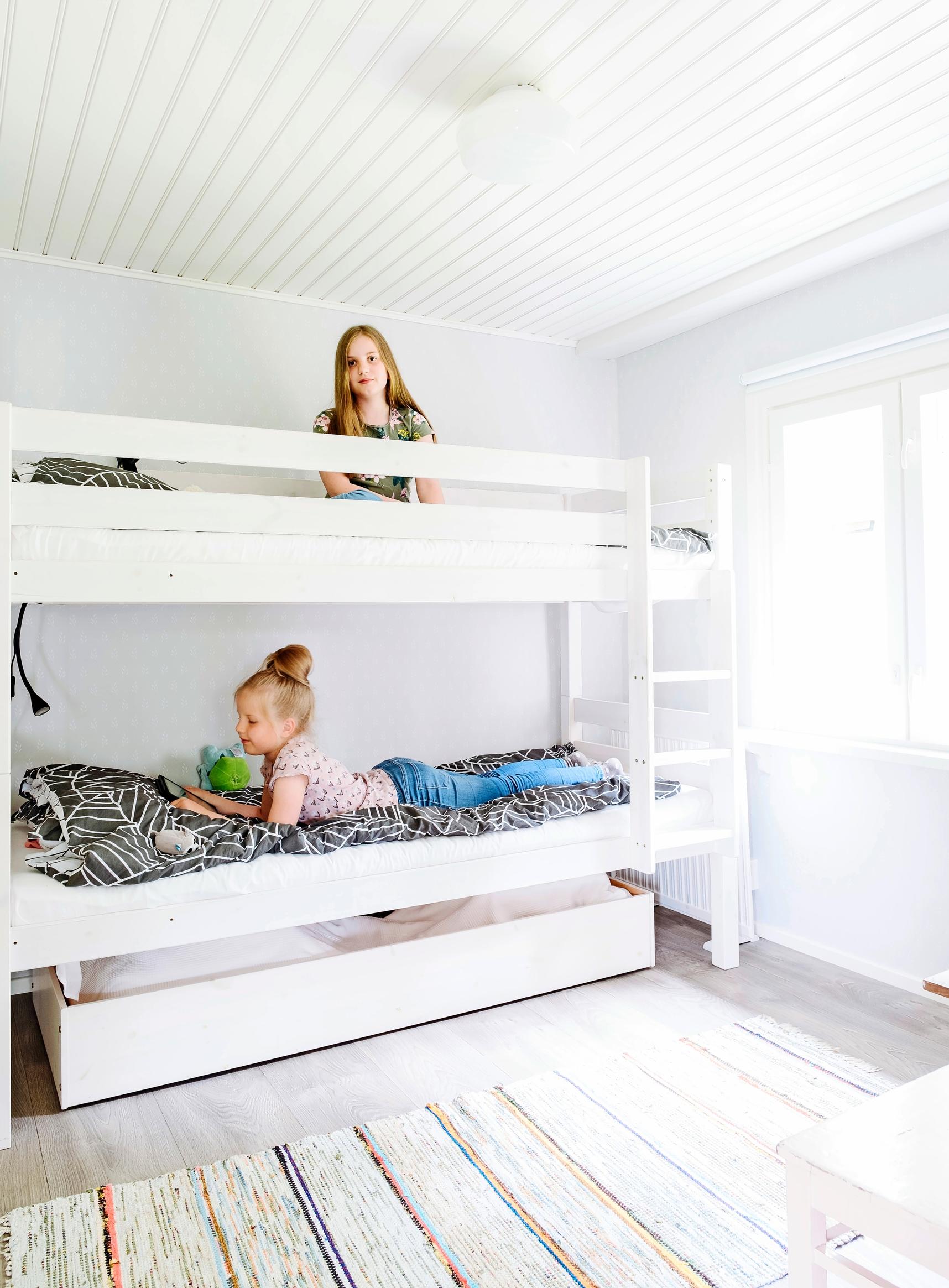
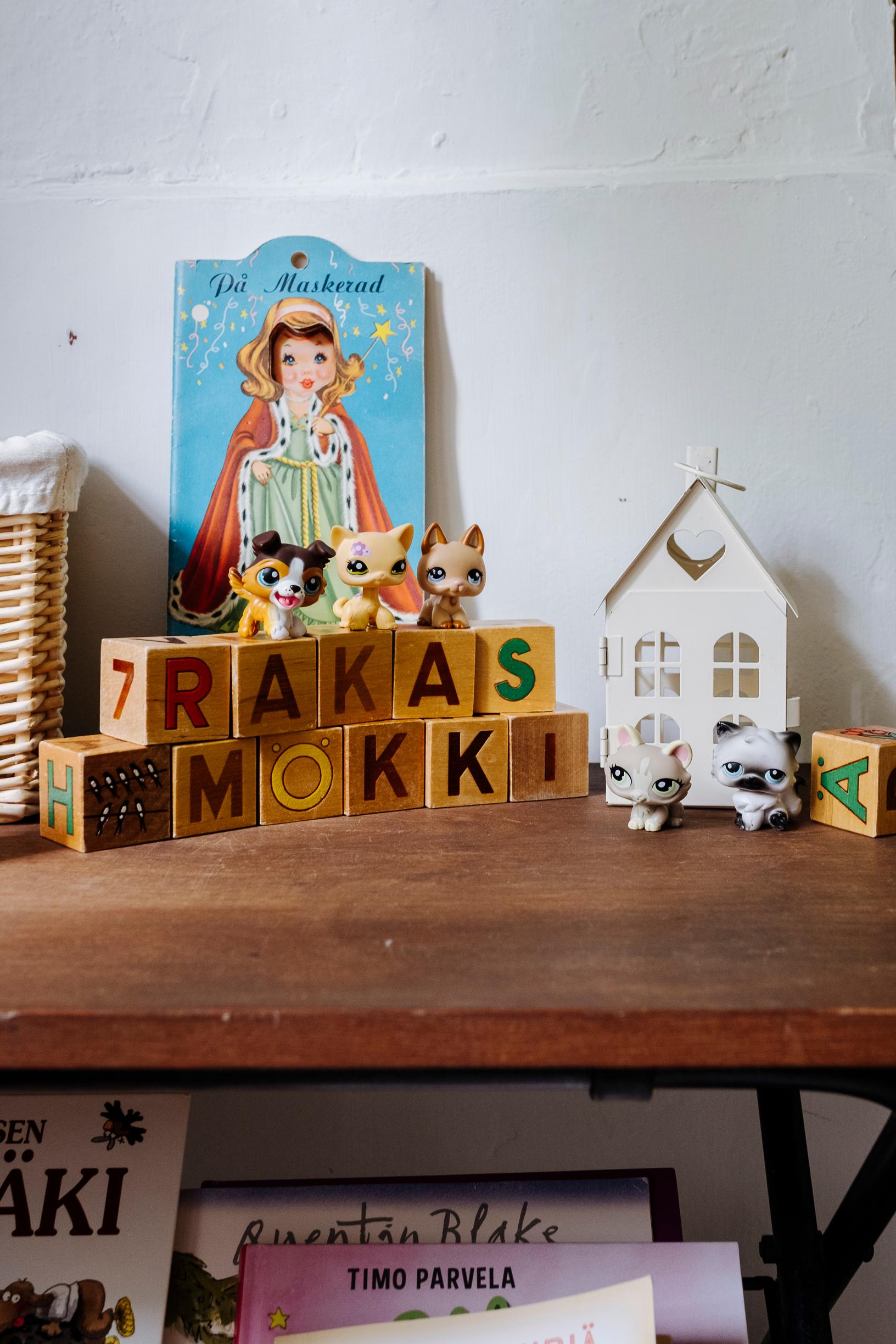
The renovation moved along so the family could celebrate Midsummer in the refurbished cottage as planned.
“The interior is now in good enough shape for us to stay here. We are planning to add a heat pump,” Sanna notes.
They still have some outdoor tasks waiting: the old sauna is at the end of its life, the garage needs painting, and the house’s exterior siding needs updating.
The family has been spending a few days at a time here, just as planned. Sanna’s parents live just a couple of kilometers (a little over a mile) away, and Janne’s mother is in the same municipality, so the grandparents are nearby. The cottage is a base for visiting them, often joining them for meals and time together.
The house along the King’s Road once served as an inn.
Deer or hares sometimes appear in the field, and you can spot them through grandpa’s old binoculars. In summer, they play darts with the girls in the backyard. The adults haven’t had much real time off yet, but that day will come.
Raseborg is familiar to both Sanna and Janne, as it’s where they grew up. When they come to the cottage, they occasionally run into longtime friends. They never completely left, having spent weekends and holidays in Raseborg. Still, they don’t see themselves moving back.
“The cottage is a wonderful place to slow down and pause. Life runs at a gentler pace here. The darkness is darker, and the quiet is quieter,” Sanna says.
